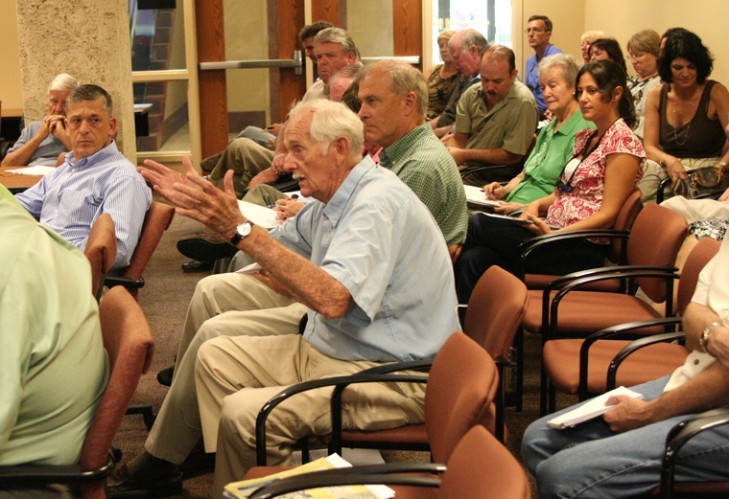INDIAN RIVER COUNTY — A coastal structures workshop Monday attended by all five county commissioners, the mayors of Indian River County’s cities and members of the county Beaches and Shores Committee heard contrasting viewpoints on the effectiveness of artificial reefs for beach protection.
Michael Walther, a longtime consultant to the county on beach and shore issues was less than enthusiastic about structures. He admitted they worked but also said they usually had negative effects on adjacent beaches that cancelled out the benefit.
Walther said structures could be effective in limited applications to treat erosion hotspots and insisted as he has for years the PEP reef installed in the mid-90s off of Vero Beach has not been effective.
Dr. Gary Zarillo of Florida Institute of Technology and others said the PEP reef has worked, surviving the storms of 2004 and 2005 and making the beach wider and more stable, both in the immediate area and possibly in the stretches above and below the reef.
The mayors of Vero Beach, Sebastian, Indian River Shores, Fellsmere and Orchid have met several times to discuss commissioning a study by Zarillo or another scientist to determine with computer modeling the effectiveness of various reef structures in protecting Indian River County’s beaches from erosion.
Speaking for the group, Orchid Mayor Richard Dunlop said the mayors are fully committed to a modeling study that will give planners a much clearer idea of how various structures will work in different locations.
He said the mayors are willing to help fund the study, which will cost several hundred thousand dollars according to recent estimates.
Zarillo demonstrated his animated model of reef effects on various beach segments, and pointed out that the models have corresponded with 90 percent accuracy to actual events when tested retroactively.
The modeling system Zarillo demonstrated takes into account a wide range of factors including water depth, current speeds, tides, annual water level fluctuations, the size of sand particles, and other hydrodynamic factors to give an accurate picture of how beaches will react to offshore structures.
James Egan, executive director of the Marine Resources Council said it would be foolish not to spend a couple of hundred thousand dollars to get clear proven information based on physics before spending tens of millions on projects that may or may not work.
In recent years, the county’s beach nourishment program, which involves placing sand on beaches, has cost in the neighborhood of $5 million a year, funded by a combination of state, federal and local money.
Commissioner Peter O’Bryan said it is likely the state will not continue to fund beach renourishment in the county, making it critical to evaluate other options.
Commissioners and audience members seemed to put more credence in Egan and Zarillo than Walthers. Commission Chairman Bob Solari asked O’Bryan to coordinate a subcommittee of the Beaches and Shores Committee to work with staff and interested parties such as the mayors to more clearly define the scope of the proposed modeling study.
“They can figure out if we are going to model the whole coast or just part of it and put together a plan that we can put out to bid,” O’Bryan said.
O’Bryan said he hoped Beaches and Shores would be able to complete the study definition task by late this year or early next year. With a study complete, the county could commission Zarillo or another scientist to evaluate what types of structures would be most effective in protecting the county’s multimillion dollar investment in beach renourishment.

